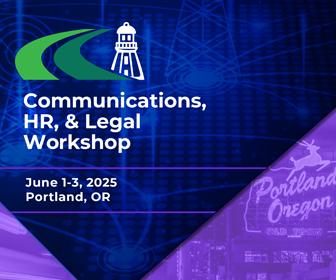- Home
- IBTTA Insights
- U. S. Governors Connect on Transportation Financing
U. S. Governors Connect on Transportation Financing


A new level of bipartisan consensus on transportation financing began to emerge earlier this month, during the annual summer meeting of the National Governors Association (NGA) in Milwaukee, Wisconsin.
State governments are important players in the U.S. highway finance debate. That’s because the state and local level is where the rubber hits the road on transportation services. When funding falls short, state departments of transportation have to scramble to fill the gap. When systems fail, governors, state legislators and mayors are sure to hear about it. (And now thanks to a new app, I’m Stuck, at action.bafuture.org from Building America’s Future, Congress will too.)
On the positive side, when there’s an opportunity to innovate, state and local governments are in the perfect position to get things done, with targeted programs that are sensitive to local transportation needs. It happened again just last month, when Oregon adopted the first road user charging system in the U.S.
Momentum from the States
That’s why IBTTA Executive Director and CEO Pat Jones and Communications Director Bill Cramer attended this year’s NGA meeting. The weekend included a 90-minute joint session of the NGA’s Natural Resources and Economic Development and Commerce Committees. Much of the focus was on infrastructure investment, and invited guests included U.S. Transportation Secretary Anthony Foxx and Rep. Bill Shuster (R-PA), chairman of the House Committee on Transportation and Infrastructure.
In the course of the weekend, the sense of urgency and opportunity came from both sides of the aisle. Rep. Shuster noted that states are in a better position to move quickly and pro-actively with transportation finance solutions. “We should get out of your way,” he told NGA participants. And Connecticut Governor Dan Malloy struck a similar tone when he raised a (multi-) million-dollar question with Sec. Foxx.
“This lack of inflation in construction is an incredible opportunity,” he said. “In a financial environment where we could bring projects online in Connecticut or in all of our states in a reasonably cost-effective way, we are squandering this opportunity. So the real question is: Is there anything else that we as governors could do to be heard on this issue, and to be that bipartisan voice that is so seldom heard in Washington?”
A Lot of Tools in the Toolbox
The conversation continued from there. But from a tolling industry point of view, Sec. Foxx had already filled in a crucial part of the answer, in an August 2 interview with a public broadcasting station, WAMU in Washington, DC.
“We’re going to need a lot of tools in the toolbox,” he said, after the interviewer asked how the federal government would secure sustainable transportation funding without raising the gas tax.
“If you go down to the local and state levels, you see different types of revenue capture like tolling,” Sec. Foxx continued. “You see revenue capture from land development alongside transportation assets. Those are all tools that need to be part of the mix.”
Governors, the Secretary of Transportation, and the Chairman of the Transportation and Infrastructure Committee all see states as the source of momentum and innovation to address the highway finance crisis. States also recognize the federal government plays a key role in federal funding – the Highway Trust Fund. Key words—“toolbox” “options” and “tolling”—have all entered the conversation. A wise way to start the countdown to the next transportation reauthorization bill in 2014.
Interested in learning more about the latest developments within the tolling industry? Join us for IBTTA’s 81stAnnual Meeting September 22 – 25 in Vancouver, British Columbia.
(Photo by Josh Kellogg)

Joining IBTTA connects you to a global community of transportation professionals, offering unmatched opportunities for networking, knowledge-sharing, and collaborative innovation in the tolling and transportation sector.
Follow IBTTA on social media for real-time updates on transportation trends and collaborative opportunities.





